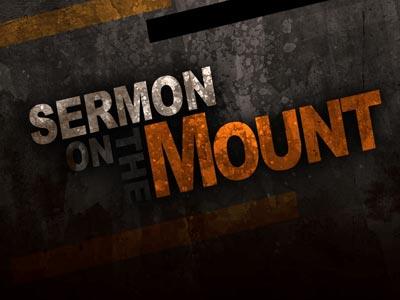-
"The Nature Of True Religion" Series
Contributed by Clark Tanner on Nov 28, 2017 (message contributor)
Summary: Sermon 12 in a study in the Sermon on the Mount
As we come now to chapter 6 of Matthew’s gospel, and continue in our study of this sermon, I want to address just a couple of peripheral issues that may or may not arise in the mind of the hearer/reader, but should be broached just on the chance that they might.
First, there is the question of the documentation of the words of Jesus here.
There are those who are of the opinion that the Sermon on the Mount is really a compilation of things that Jesus taught in various places and times. They argue that Matthew was a mathematician and liked things put in an orderly fashion, so he gathered all of these teachings together and put them in an easy-to-read format.
I personally disagree with that assessment. Indeed, Matthew was a good note taker, which would correspond with being a detailed and orderly person. But as we have already noted, there is a progression in this sermon that, once observed, remains very apparent. When we cannot see the purposeful flow of His teaching throughout these three chapters it may be because we’re looking too much on the surface, zooming in on the details of each of His illustrations and the individual items He addresses, and not backing up to get the larger picture.
Now there is certainly a place for doing that more detailed type of study. It’s done all the time. Every word of scripture is valuable and indispensable and every word Jesus chose to use was from the lips of God Himself.
The commentators, when they come to these chapters, have a great deal to teach from each and every verse. Lloyd-Jones, for example, takes one hundred pages in his commentary to cover verses 21-48 of chapter 5.
You may remember that when we went through Ephesians we took almost two years. I wrote a total of 69 sermons in that series.
And when pastors decide to teach through the Sermon on the Mount they invariably do the same thing. That is good and needful, and it is also the very reason why I am not going to approach it in that same way.
My goal in this is to stay at a higher altitude, looking down at the whole and seeing the whole lake, as it were, instead of trying to count the fish. I hope that by so doing we will get a whole new but equally valid panoramic view of what Jesus was conveying in this Sermon on the Mount.
That is what we’re going to continue to look at today, first by glancing backward and remembering where we have been.
First though, let me finish stating my case for this being one sermon delivered to one large multitude in the hour of a certain day. Very simply, Matthew says in 5:1-2 that Jesus saw the multitudes, sat down, opened His mouth and began to teach, and chapter 7 ends saying that the ‘result’ of Jesus’ words was that the multitudes were amazed at His authoritative teaching.
If I said, “Last week I was barbequing in my back yard and the neighbors began to be drawn by the smell of mesquite and cooking steak. So one by one they came to my yard and I handed them Styrofoam plates and they dished up and ate and we had a great time, chatting, playing badminton and drinking iced tea, then one by one they left until I was alone to clean up the mess by myself”, wouldn’t it sound a little absurd for one of you to ask, “Well then, did this take place over a period of months”?
When a preacher sets to work preparing a sermon his primary intention in each and every case needs to be to have a point, state his point, build his argument in clear and understandable and reasonable terms, and bring his point home by sound application of biblical truth that is undeniable and significantly applicable to the lives of his hearers.
That is the method demonstrated for us by Jesus, and the Sermon on the Mount is the ultimate demonstration of the perfect sermon.
GLANCING BACK
So as I said, we glance back to get a view of our backtrail and what we see will, I think, support the claims I have just made as we witness the progressive nature of His words to this point.
First Jesus describes the Christian and in the course of it describes the way one becomes a Christian, as He talks about humility and repentance and a desire for righteousness and so forth.
Once He has done that, He basically says that being a Christian is not fulfilling the Law, it is having the Law fulfilled in and through the Christian as he walks in righteousness in the power of the Spirit.

 Sermon Central
Sermon Central



